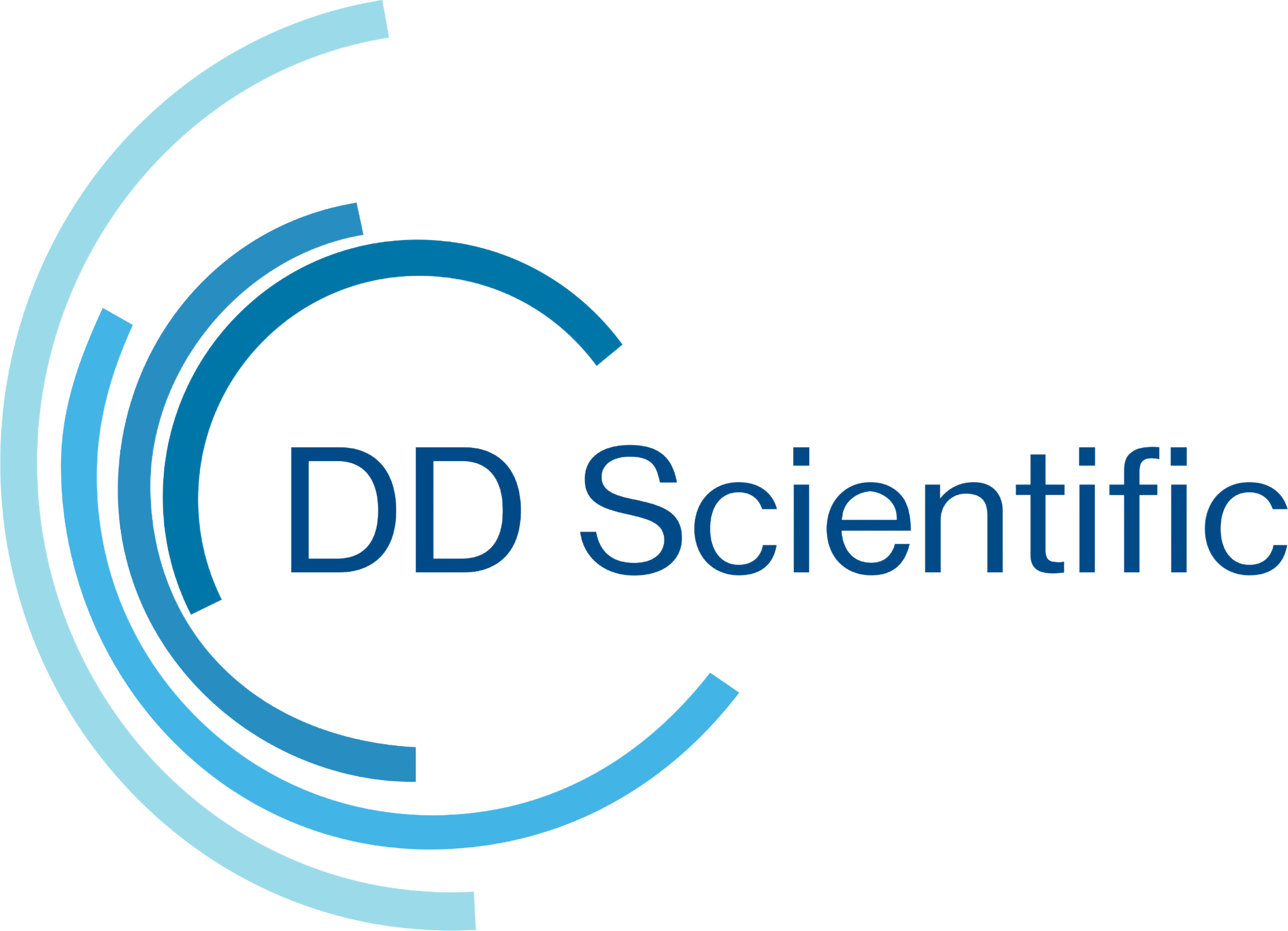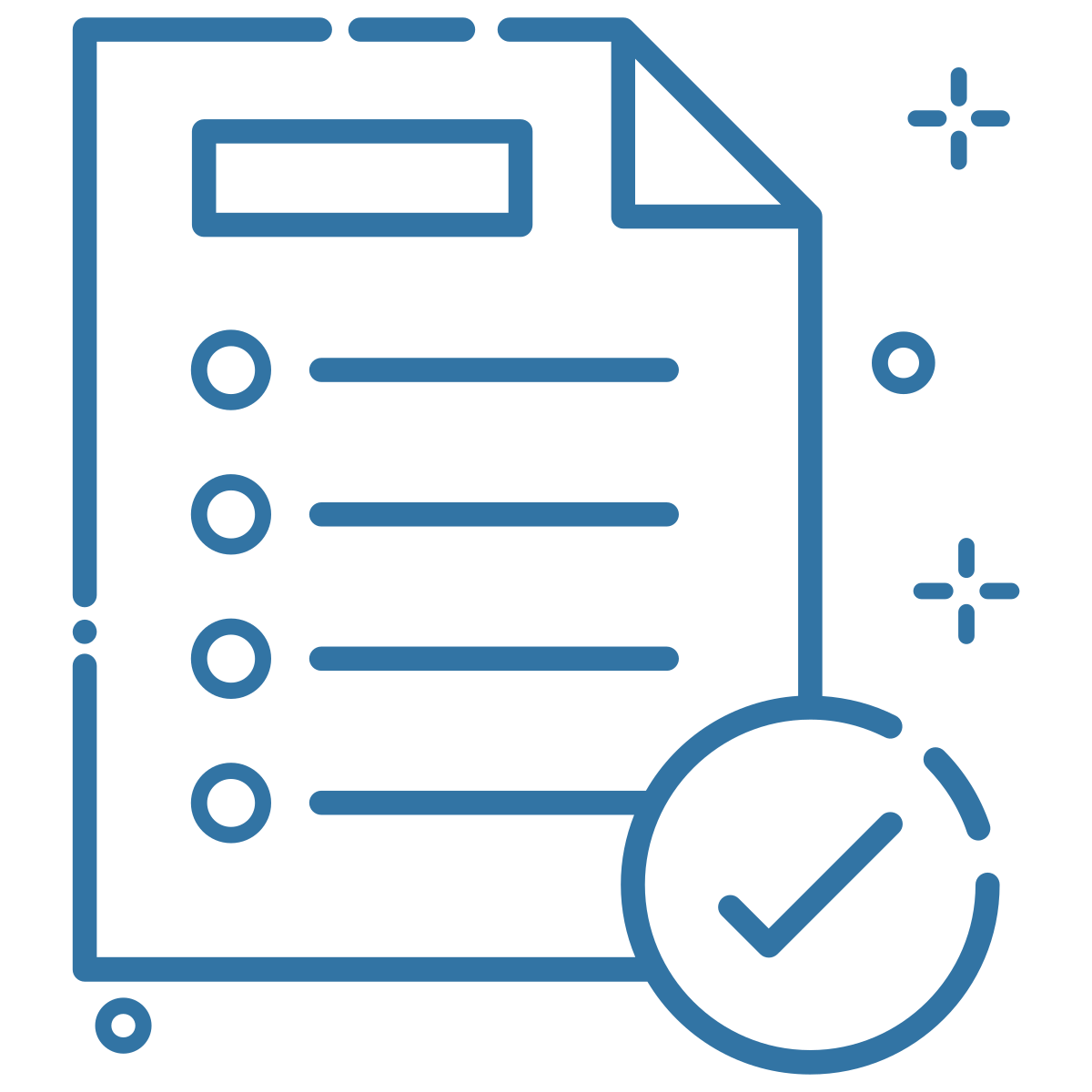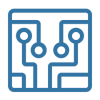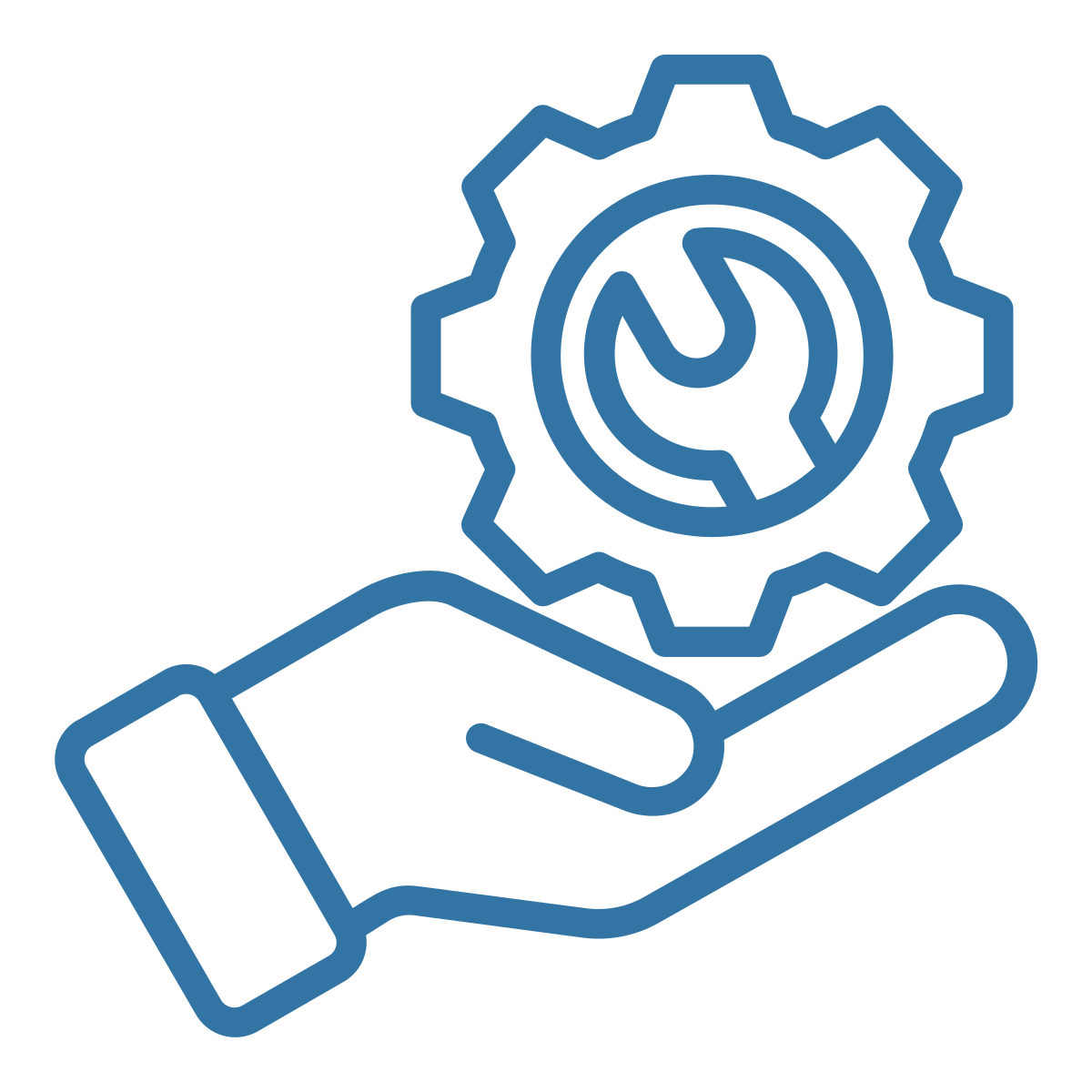
Frequently Asked Questions
You will find answers to many of the common enquiries we receive from our customers here.
Whether you're a seasoned professional or new to gas sensor technology, this page is designed to provide clear and concise information to help you get the most out of our products.
🔍 Browse all FAQ's below or use the following links to jump to a section:
General - Sensor Selection - Commercial - Technical - Webstore
General
As DDS we manufacturer electrochemical gas sensors for a broad range of applications. Our range features over 100 sensors which have been developed for a number of specific target gases and are offered in a variety of sizes, or packages as we refer to them.
For more information get in touch.
DDS sensors are manufactured at our premises in Portchester, United Kingdom. Portchester is located on the South Coast of England adjacent to the City of Portsmouth.
For more information get in touch.
Our workforce is typically around 100 staff. Our heavy use of automation means that our annual production output is more than 3 x that of other sensors manufacturers with a similar sized workforce.
If you are interesting in joining DD-Scientific please visit our work for us page.
For more information get in touch.
Sensor Selection
Using the search bar in the header you will be able to find specific part and those closely associated with it.
Alternatively, visit all products and use the search bar for target gas, package or features such as high-temperature or high-output.
If you still cant find what you are looking for get in touch.
Using the 'view by application’, ‘view by target gas’ and ‘view by package’ pages you can run an initial search before using the filters to hone your selection further.
If you still cant find what you are looking for get in touch.
If we don't have the sensor you are looking for please get in touch and we will be happy to help. You may find the variant you require is already on our roadmap and if you have a volume requirement we may consider putting it into production.
We pride ourselves on our ability to react to customers requirements so will be glad to discuss your needs further.
We are happy to provide free samples where a customer or potential customer has a demonstrable need for one of our products and wishes to conduct their own testing.
To discuss your requirements further get in touch.
One of DD Scientific’s key differentiators is our willingness and ability to provide customisation to customers. Whether this is a simple requirement such as a bespoke label or more involved such as custom outputs, performance characteristics or different colour mouldings we are always very happy to discuss. We do however assess all customisation on the basis of potential and realistic volume requirements - if we are unlikely to recoup any development costs through normal use of the product, we may choose to ask for a non-recurring expenditure (NRE) contribution up-front or we may decide to refuse.
To discuss your requirements further get in touch.
We provide custom and branded labels to many of our customers. These are designed specifically to customer spec and feature bespoke information such as OEM logo, OEM name, OEM part number or sensitivity band. Custom labels are dependent upon volume and are typically subject to a set-up charge.
To discuss your requirements further get in touch.
Commercial
You can view our opening hours and closure dates on our contact page.
We don’t typically supply through distribution since we prefer to work with customers directly. We supply to all corners of the world so please get in touch and we will be glad to discuss your requirements with you.
The only exception to this is China where we have a longstanding supply relationship with a trusted partner. We request that customers looking to source in China also make contact so that we can divert your enquiry to our local partner.
To discuss your requirements further get in touch.
Please complete the contact form on our ‘contact us page’, detailing your requirements in the message section.
This will send an enquiry to our sales team who will be in touch to discuss your requirement further or to provide pricing.
Once you have submitted an enquiry, we will typically provide you with a quotation by return mail. If we are unsure as to your application or business activity we will be in touch to verify before providing pricing.
Once you have a quotation you can either provide us with a formal purchase order or the minimum information required in order to process an order.
New customers are required to complete 3 orders on a payment in advance (proforma) basis before applying for a credit account. We can take payment by BACS, credit card or debit card in the first instance.
To discuss further get in touch.
Whilst our competitors may tell you DDS sensors are lower cost because they are inferior to their own, this could not be further from the truth. The sensors we produce at DDS are of the highest quality and now feature in 9 of the top 10 selling global gas instrument OEMs.
As a business we are forever in pursuit of the marginal gains which give us the edge over our competitors, a theme which runs throughout DDS and is ultimately driven by the following;
- Our sensor designs are far more efficient than others which in some cases were designed decades ago. With the benefit of more than 300 years collective experience of gas sensor manufacturing, DDS sensor designs are engineered to fully optimise manufacturability vs. performance vs. price and regularly reviewed to ensure we are in step with our customers needs.
- We have invested heavily in automation since day 1 and we continue to do so. We are continually pushing the boundaries of sensor manufacturing in order to drive cost down and volumes up whilst ensuring quality is not compromised. This continued investment means that we now produce more than 3 x the volume of sensors of our competitors using 30% less staff - a cost saving we pass on to our customers.
- As an independent company, we remain agile and focused with the ability to make quick and pragmatic decisions. This allows us to be driven by our customers and the markets we work in. This is simply not the case in the corporate environment where ultimately the actions of the entire business are all too often driven by share price alone.
You can read more about the DDS difference here.
If you want to find out more get in touch.
In order to process your order an order we require the following;
- Company name & VAT number (where applicable)
- Delivery address, contact name and contact details
- Invoice address, contact name and contact details
- Purchase order reference
- Preferred freight forwarder and account number (where applicable)
Once we have this information we will provide an order acknowledgement in due course.
To discuss your requirements further get in touch.
Lead times vary between product types and order quantities. Our typical lead times for high running products such as oxygen, carbon monoxide and hydrogen sulphide sensors are rarely longer than 2 weeks from receipt of order (or receipt of funds in the case of pro-forma customers).
Exotic gas sensors or those produced in lower volumes may take longer but the maximum lead-time for any sensor should not exceed 4 weeks unless we are seeing particularly high demand for that product.
To confirm lead-times for specific sensors get in touch.
We can take payment by BACS, debit card and credit card.Please note that card payments may be subject to a surcharge.
To discuss your requirements further get in touch.
Credit terms are typically only available to customers who have paid for 3 pro-forma orders previously and are subject to financial status / credit check.
If you wish to open an account with DD Scientific, please reach out using our contact form.
To discuss your requirements further get in touch.
Our credit terms are typically 30 days from date of invoice.
Credit terms are typically only available to customers who have paid for 3 pro-forma orders previously and are subject to financial status / credit check.
To discuss your requirements further get in touch.
All DDS sensors are provided with a warranty which varies depending upon sensor type and target gas. This information is provided on the product data sheet. Full warranty terms can be found in our Terms & Conditions of Sale.
Our warranty process is straightforward in that any sensors which are returned and found to be faulty we have freight costs refunded and either replacement product or a credit issued subject to customer preference.
In some instances we are able to provide extended warranties upon full understanding of customer application.
To discuss warranty terms further get in touch.
Technical
Typically, our QR codes contain sensor part number, serial number and date code in the case of some sensor models. These do not require specialist equipment to be scanned and will work on a mobile phone camera.
Upon request we can also include other customer data.
To discuss further get in touch.
Electrochemical sensors operate based on electrochemical reactions that occur at the interface between an electrode and an electrolyte. This electrochemical reaction generates a measurable electrical signal (such as current, voltage, or impedance) proportional to the concentration of the analyte.
You can find a number of video which detail the workings of our sensors here.
To find out more get in touch.
The chemical reactions which take place inside an electrochemical sensor are affected by the ambient temperature. As a result, both sensor baselines and sensitivities can change with changes in temperature - and in some cases can be quite significant. However with adequate compensation within an instrument, the errors resulting from these changes can be minimised to low levels. DD-Scientific is able to provide detailed temperature data for any of our sensors - please do not hesitate to contact us for this information.
For more information get in touch.
The calibration period for a sensor will depend on a number of factors such as the environment in which it is used, operating temperature, humidity, atmospheric pressure and environmental pollutants. In all cases we recommend sensors are calibrated in line with target market legislation. Typical calibration intervals are 3 months or 6 months. Some of our sensors such as the S+2ECO are designed to be installed for very long periods without calibration - in these cases the drift characteristics of the sensors are very well known and can be relatively easily compensated for.
For more information get in touch.
The catalysts used in any electrochemical sensor have the potential to catalyse the oxidation or reduction of gases other than the target gas. For example, most carbon monoxide sensors will show sensitivity to hydrogen. Where possible DD Scientific attempt to develop gas sensors with as low as possible cross sensitivity to other gases at the chemistry level, and where it is not possible we provide filters inside the sensors to remove interferences. For every sensor that DD Scientific produce, we provide a list of the known cross interferences so that users can review and plan around them.
For more information get in touch.
The majority of DD Scientific sensors are provided with a PTFE cover on the front to prevent dirt and water entering. The addition of further dust covers and/or membranes will have an impact on how fast the sensor can respond to changes in gas concentration.
For more information get in touch.
DD-Scientific’s sensors are relatively tolerant to atmospheric pressure and can be used typically from 900mbar to 1100mbar with no need for compensation. Pressures outside of this window can cause deterioration in the mechanical integrity of our sensors - please contact us if you are planning to use the sensors outside of these pressure limits.
For more information get in touch.
We recommend that our gas sensors are stored in a clean, relatively dry environment free from atmospheric poisons such as silicone or solvent vapours. Many of our customers store sensors in refrigerators - this is perfectly fine although not necessary.
For more information get in touch.
When a sensor sees a high gas concentration, namely that beyond its specified maximum overload value, it is possible that it will not be able to oxidise or reduce all of the target gas. In this case, the sensor’s internal reference electrode may become affected and the signal may collapse. In this case, the sensor should be allowed to re-settle in clean air or zero gas - this process can take a few minutes to occur
DD Scientific sensors will not be damaged by exposure to high levels of target gas.
For more information get in touch.
Recommended basic circuit diagrams for all of our sensors can be found in the circuit diagrams section of our website.
If you are working on integration DDS sensors and require assist please reach out and we will be glad to put you in contact with our in-house electronics engineer.
For more information get in touch.
The JFET is present to ensure that the potentials of the sensing and reference electrodes remain at the same potential during instrument storage and transit. This minimises the settling time of the sensor when power is applied to the drive circuitry and means that the sensor will be ready to measure gas within a few minutes or less.
Note that it is not recommended to add a JFET to biased sensors (such as NO or lead free O2 sensors).
For more information get in touch.
Date codes are typically printed on the label of DDS sensors in DD/MM format. This date details when the sensor was manufactured and may not necessarily link to the date of shipment.
The sensor serial number has no relevance to manufacturing date.
For more information get in touch.
Traditionally, electrochemical O2 sensors have used lead in their construction. The use of lead however, potentially poses both environmental and health risks. This, coupled with the Restriction of Hazardous Substances (RoHS) Directive in the EU have driven manufacturers towards seeking alternative materials and methods for O2 sensor production.
A lead-free O2 sensor is exactly what is says - an O2 sensor which doesn't rely on lead in its construction. Aside from environmental, compliance and health benefits, lead-free O2 sensors typically last for 5 years+, approximately double the working life of lead-02 sensors. This factor significantly reduces the need for maintenance and repair during the life of a host instrument and can be a key factor in the end user decision making process.
It is important to note that lead-free O2 sensors differ from lead-O2 sensors in that they require a bias within their circuit. This requires a different approach to electronic design, something which many OEMs have embraced through a simple redesign and the use of a coin-cell to maintain bias in the case of portable instruments. Circuit diagrams for both lead-O2 and lead-free sensors can be found on our circuit diagram page.
You can view circuit diagrams for both lead-based and lead-free O2 sensors in the circuit diagram section of this website. If you need assistance with integrating either sensor into your designs, please don't hesitate to get in touch and our in-house electronics engineer will be glad to help.
For more information get in touch.
Our commitment to quality sees us validate the performance of every sensor we manufacturer prior to despatch. Our rigorous test and validation process employ a number of test procedures, some of which are unique to us, to ensure our products meet spec.
To find out more about our testing procedures visit our quality page.
The test data for every single sensor produced at DD Scientific is uploaded to our central database. Given a serial number, we can provide the test data for any sensor upon request.
For more information get in touch.
Webstore
The DD-Scientific webstore is for customers who require small volumes of gas sensors and are not instrument manufacturers (OEMs).
We have historically relied upon formal quotations and proforma invoices for all transaction and whilst this process is still appropriate for our OEM customers, the webstore makes order placement and payment far simpler for low-volume, non-OEM buyers.
For more information get in touch.
No. The pricing provided through the webstore is only relevant to those buying small volumes of sensors and are not instrument manufacturers (OEMs).
Our OEM pricing structures are complex since they are tailored to market, volume and region. These are not currently available through the webstore.
If you are an instrument manufacturer you should get in touch to secure OEM pricing.
Pricing is only available for customers who are logged in. Online pricing is not available to instrument manufactures (OEMs) who should contact us directly for OEM pricing.
In order to gain a login, customers will need to create an account. Account applications are reviewed by our sales team prior to acceptance in order to verify legitimacy.
For more information get in touch.
Account applications are reviewed by our Sales Team prior to acceptance in order to verify legitimacy. This process typically takes a maximum of 2 working days.
Should we need more information in order to complete our due-diligence we will be in touch via email.
If your application has not be processed within 2 working days please get in touch.
If are an instrument manufacture (OEM) we will reject your application and contact you directly to discuss your requirements and OEM pricing.
We reserve the right to reject applications where registration data is incomplete, where we have concerns around trade compliance or if we believe that the application is disingenuous in any way.
In order to avoid rejection please ensure the information provided is accurate and complete. Your application should use an email address which is clearly linked to your business or academic institution to ensure approval.
For more information get in touch.
Where discounts are available they will be outlined in the shopping cart.
We do not offer any further discounts via the webstore.
For more information get in touch.
Yes - a minimum order charge of £100 / €145 / $155 (excluding shipping) applies to all orders.
For more information get in touch.
We ship to over 80 countries. If your country is not available within the dropdown in the website header I am afraid we are not shipping to that location at present.
For more information get in touch.
We only accept orders where shipping and billing addresses are the same to ensure trade compliance and avoid fraud. Whilst our policy for Instrument Manufacturers (OEMs) differs, we do not offer flexibility on this for non-OEM customers.
For more information get in touch.
People buy sensors from us for broad range of applications and we sell to variety of customer types including research organisations, citizen science and governmental bodies. On occasion we also sell to end-users and service providers however we have a number of policies in place to ensure we do not compromise our OEM customers' aftermarket business.
- We only supply sensors in limited volumes via our webstore.
- Our webstore pricing is pitched at a price which will not disrupt OEM business.
- We do not supply OEM branded or OEM special sensors to anyone other than the OEM they are associated with.
- We don't supply sensors based upon an instrument model or spec. Where these are provided we route the customer back to the OEM
If you have any questions around this topic please dont hesitate to get in touch.
Most items will ship from stock and will leave our UK premesis within 2-3 working days. You will be informed by email upon shipment at which point we will provide a tracking number. Transit time will depend upon your geographical location.
We cannot guarantee stock of all items. Where items are out of stock, we will advise of lead time by email within 2-3 working days from receipt of order. Items which are not in stock will typically dispatch in no more than 2 weeks.
Please note that a lead time of up to 2 weeks from order placement to shipment is not considered as sufficient grounds for order cancellation. If you require the items to ship in less than 2 weeks, please ensure you confirm lead time prior to order placement.
Returns
Since the products we manufacture at DD-Scientific are considered to be perishable we only accept returns in the event of a product failure or a quality issue. If either of these occur please get in touch for support before instigating a return.
Damages and issues
Please inspect your order upon receipt and contact us immediately if the item is defective, damaged or if you receive the wrong item. If this happens please get in touch for support before instigating a return.
Suitability for Application
When purchasing sensors from DD-Scientific, the buyer assumes responsibility for ensuring their suitability for the application. If sensors are being used in an instrument, suitability should be confirmed with the instrument manufacturer (OEM) prior to purchase.
All orders are subject to DD-Scientific Standard Terms & Conditions which can be found here.
For more information get in touch.
Order Processing:
Once your order is placed you can expect an email within 2-3 days to confirm shipment date.
Most items will ship from stock within 2-3 days, upon which you will be send tracking information. Where the item is out of stock, we will advise of lead time by email which will typically be no more than 2 weeks.
If you require the items in less than 2 weeks, please ensure you confirm lead time prior to order placement.
Store Pickup:
We do not offer collection in person from our factory.
Shipping Rates:
Shipping charges for your order will be calculated and displayed at checkout.
Taxes & Duties:
Your order may be subject to import duties and taxes (including VAT) which are incurred once the shipment reaches your destination country. These are not included within your purchase price and are not the responsible of DD-Scientific. Charges, if applied, are your responsibility as the customer.
All orders are subject to DD-Scientific Standard Terms & Conditions which can be found here.
For more information get in touch.

Need our help?
If you need assistance selecting, sourcing or integrating one of our sensors we are here to help.





